日本を旅すると、賑やかな都市の片隅や、深く静かな森の中に、朱色の鳥居が静かに佇んでいるのを目にします。それは、私たちを「神道」の世界へと誘う入り口です。神道には、キリスト教の聖書やイスラム教のコーランのような明確な経典も、絶対的な教祖も存在しません。それは、この国の風土と共に生まれ、人々の暮らしの中に息づいてきた、自然発生的な信仰の形です。山や川、岩や木、さらには一粒の米にさえ神が宿ると考えるその世界観は、現代日本人の精神性や文化の根底に、今なお深く静かに流れています。
- 八百万の神々との共生: 神道は「やおよろずのかみ」と呼ばれる無数の神々の存在を認めます。これは単なる多神教という言葉では片付けられません。太陽のような偉大な神から、道端の石や古井戸に宿る小さな神まで、あらゆる存在に神聖さを見出し、畏敬の念を抱く世界観です。これは、自然を支配する対象ではなく、共生するパートナーと見なす日本古来のアニミズム(精霊信仰)に深く根ざしています。
- 「穢れ」を払い「清浄」を尊ぶ心: 神道において最も重要な価値観の一つが「清浄」です。罪(Sin)という概念よりも、「穢れ(けがれ)」、つまり生命力を枯渇させる不浄な状態を忌み嫌います。神社を訪れた際に手や口を清める「手水(てみず)」の儀式は、この穢れを祓い、心身を清浄な状態に戻して神と向き合うための、象徴的な行為なのです。この考え方は、日本文化における清潔さへのこだわりにも通じています。
- 見えざるものとの境界線「鳥居」: 神社の入り口に立つ鳥居は、神々が鎮まる神聖な領域(神域)と、私たちの日常の世界(俗世)とを分ける結界の役割を果たします。鳥居をくぐる前の一礼は、これから神聖な場所に入ることへの敬意と、日常の穢れを外に置くという意思表示です。それは、目に見えない世界への畏敬の念を形にした、日本文化の象徴的な門なのです。
森羅万象に宿る生命の輝き
神道の起源は、日本の歴史の黎明期、人々がまだ文字を持たなかった時代にまで遡ります。古代の日本人は、雄大な山々が噴火し、川が氾濫し、森が豊かな恵みをもたらす、厳しくも美しい自然の中で生きていました。彼らは、人知を超えた自然の力や現象の中に、神聖な存在、すなわち「カミ」の働きを感じ取りました。
古代の日本人は、特定の山や森、岩、泉などが神聖な存在であると信じていました。そのような場所には神霊が宿り、人々の祈りや崇拝を受けることで、神々の力が地域や人々に与えられると考えられていました。(神社のミカタ – 出典:神社の起源と神道の発展 | 自然崇拝からの宗教施設)
この「万物に神が宿る」という考え方は「八百万の神(やおよろずのかみ)」という言葉に象徴されます。「八百万」とは具体的な数ではなく、「無数に多い」という意味です。太陽を神格化した天照大御神(あまてらすおおみかみ)のような神話に登場する神々だけでなく、ご先祖様の霊、地域の平和を守った偉人、さらには使い古した道具に至るまで、あらゆるものが信仰の対象となり得るのです。
異文化との融合が生んだ寛容性
6世紀頃、日本に仏教が伝来すると、古来の神道は大きな転機を迎えます。当初は対立もありましたが、やがて日本の神々は仏が人々を救うために仮の姿で現れたものだとする「本地垂迹説(ほんじすいじゃくせつ)」などが生まれ、両者は巧みに融合していきます。これを「神仏習合(しんぶつしゅうごう)」と呼びます。
この結果、神社の境内に寺が建てられたり、神前で読経が行われたりするなど、独自の信仰形態が生まれました。例えば、八幡神(はちまんしん)は「八幡大菩薩」と呼ばれ、神でありながら仏教の称号を持つ存在として広く信仰されました。この柔軟で寛容な精神性は、神道が特定の教義に縛られない、大らかな宗教であったからこそ可能だったと言えるでしょう。明治時代に入り、政府の方針で神と仏は明確に分離(神仏分離)されましたが、今でも私たちの生活の中には、その名残が色濃く残っています。
神社 日常と非日常をつなぐ聖域
神社は、神々が鎮座する特別な場所であり、私たちが神と交流するための拠点です。その入り口には必ず「鳥居」が建てられています。鳥居は、神聖な神域と私たちの暮らす俗世とを区別する境界線です。鳥居をくぐる前に一礼するのは、これから神様の領域に入らせていただくという敬意の表れです。
参道を進むと「手水舎(てみずや)」があります。ここで手と口をすすぎ、心身の「穢れ(けがれ)」を祓い清めます。神道では、死や病、不道徳な行為によって生じる「穢れ」を不浄なものと考え、神と向き合う前にはまず身を清めることが重要だとされています。
拝殿の前に着いたら、いよいよ参拝です。一般的な作法は「二拝二拍手一拝」。
- 深いお辞儀を二回行う(二拝)
- 胸の高さで手を合わせ、右手を少し下にずらして拍手を二回打つ(二拍手)
- ずらした右手を元に戻し、心を込めて祈る
- 最後にもう一度、深いお辞儀をする(一拝)
この一連の作法は、神への敬意と感謝を示すための、洗練された身体表現なのです。
現代に息づく神道の心
神道は、宗教として意識される場面は少ないかもしれませんが、その価値観は現代日本人の生活の隅々にまで浸透しています。新しい年を迎える「初詣」、子どもの成長を祝う「七五三」、豊作を祈り収穫に感謝する各地の「祭り」。これらはすべて神道に根差した文化です。
また、家を建てる前の「地鎮祭」や、新しい車を購入した際の「交通安全祈願」なども、その土地や物に宿る神々に挨拶し、安全を祈願する神道的な思想の表れです。
特定の教えを強制することなく、ただ自然を敬い、祖先を尊び、コミュニティの調和を願う。神道とは、日本人が長い歴史の中で育んできた、生き方の「道」そのものなのかもしれません。森羅万象に生命の輝きを見出し、それらと共に生きるという思想は、環境問題などが叫ばれる現代において、私たちに新たな示唆を与えてくれるのではないでしょうか。
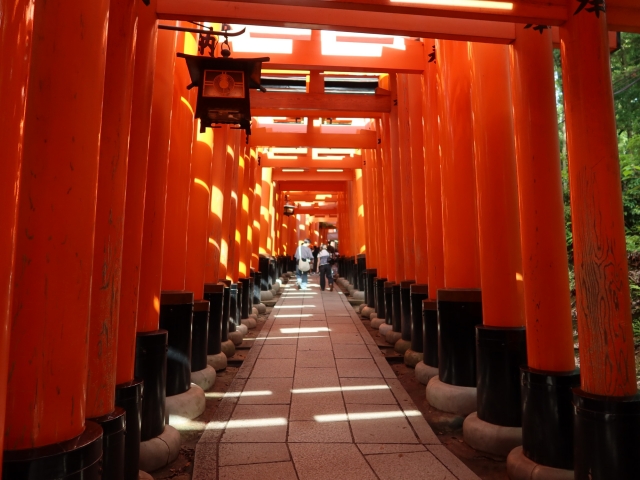
解説ポイント①:八百万の神々との共生
神道の根幹をなすのが「八百万の神(やおよろずのかみ)」という概念です。これは、神々が無限に存在することを示唆しています。この世界観は、以下の三つの主要なカテゴリーの神々によって構成されています。
- 自然神:山、川、海、風、雷、太陽、月など、自然物や自然現象そのものを神格化したものです。例えば、富士山は「浅間大神(あさまのおおかみ)」として、嵐は「須佐之男命(すさのおのみこと)」として崇められます。これは、自然の恵みへの感謝と、その猛威への畏怖という、人間と自然との根源的な関係性から生まれた信仰です。
- 人格神・氏神:『古事記』や『日本書紀』といった神話に登場する神々や、特定の氏族の祖先とされる神々です。皇室の祖神とされる天照大御神(あまてらすおおみかみ)や、国造りの神である大国主神(おおくにぬしのかみ)などがこれにあたります。これらは、国家や共同体の成り立ちと秩序を物語る存在です。
- 怨霊・祟り神:政治的な争いで非業の死を遂げた人物などを、その強力な怨念が災いをもたらす「祟り神」として祀る信仰です。学問の神様として有名な菅原道真(すがわらのみちざね)も、元々は政争に敗れたことによる怨霊として恐れられ、その魂を鎮めるために手厚く祀られたのが始まりです。災いを恐れるだけでなく、その強大なエネルギーを敬い、祀り上げることで平穏を願うという、独特の信仰体系が見られます。
このように、神道における「神」は、全知全能の絶対者ではなく、時に荒々しい側面も見せる多様な存在です。人々はこれらの神々を一方的に崇拝するだけでなく、祭などを通じて交流し、共生してきたのです。
解説ポイント②:「穢れ」を払い「清浄」を尊ぶ心
神道において、倫理的な善悪の判断基準以上に重視されるのが「清浄(せいじょう・きよらかさ)」という価値観です。これは、物事が本来あるべき清々しく、生命力に満ちた状態を指します。その対極にあるのが「穢れ(けがれ)」です。
- 穢れの正体:「穢れ」とは、文字通り「気枯れ」、つまり生命エネルギーが枯渇した状態を指します。神道では、死、病気、出産、血液などが穢れの根源と考えられます。これらは道徳的な「罪」とは異なり、生命のサイクルの中で誰もが避けられない自然な現象です。しかし、これらの非日常的な出来事は、共同体の日常の秩序を乱し、生命力を減退させると考えられたため、一時的に遠ざけられるべき対象とされました。
- 祓(はらえ)という浄化儀式:穢れた状態をリセットし、再び清浄な状態に戻すための儀式が「祓(はらえ)」です。神社の手水舎で水を使って身を清める行為や、神職がお祓いで使用する大麻(おおぬさ)を振るう所作は、この祓の思想を具現化したものです。水や塩、火などが浄化の力を持つとされ、儀式に用いられます。
- 常若(とこわか)への願い:清浄さを保つことは、「常若」という理想に繋がります。これは、常に若々しく、生命力に満ち溢れた状態を保ち続けるという思想です。伊勢神宮が20年ごとに社殿を建て替える「式年遷宮」は、この常若の思想を最も大規模に体現した儀式であり、常に瑞々しい生命力を更新し続けることの重要性を示しています。
この清浄観は、日本文化における「禊(みそぎ)」の精神や、日常生活における清潔さを重んじる習慣にも深く影響を与えています。
解説ポイント③:見えざるものとの境界線「鳥居」
神社を訪れる誰もが目にする「鳥居」は、単なるゲートではありません。それは神道の空間認識と世界観を象-徴する、極めて重要な建造物です。
- 聖と俗の結界:鳥居の最も重要な機能は、神々が住まう神聖な領域(聖域)と、人間が生活する日常的な領域(俗世)とを区別する「結界」としての役割です。鳥居をくぐることは、単に物理的に敷地内へ入るのではなく、精神的に異なる世界へと足を踏み入れることを意味します。そのため、鳥居の前で一礼するという作法は、これから神域に入らせていただくという謙虚な気持ちと敬意を表すための、大切な儀礼なのです。
- 多様な形式とその意味:鳥居には様々な形状があり、大きく「神明(しんめい)系」と「明神(みょうじん)系」の二つに分類されます。
- 神明鳥居:直線的な部材で構成された、シンプルで素朴な形式です。伊勢神宮などで見られ、最も古い形式と考えられています。その簡素な美しさは、自然そのものを崇拝した古代の信仰の姿を彷彿とさせます。
- 明神鳥居:笠木(かさぎ)と呼ばれる一番上の横木が反り上がり、柱が少し傾斜しているのが特徴です。全国の多くの神社で採用されている形式で、より装飾的で荘厳な印象を与えます。朱色に塗られていることも多く、これは魔除けの意味があるとされています。
- 鳥居の語源と象徴性:鳥居の語源には諸説ありますが、「鶏の居場所」を意味するという説が有名です。日本神話において、天岩戸(あまのいわと)に隠れた天照大御神を誘い出すために、常世長鳴鳥(とこよのながなきどり)、つまり鶏を鳴かせたという記述があり、鶏は神聖な鳥とされていました。鳥居は、神の使いである鳥が止まる場所、すなわち神域への入り口を象徴していると考えられています。
鳥居は、神道の「見えない世界を敬う」という精神を可視化した、力強いシンボルなのです。
参考文献
- 日本人の精神性・日常生活に根付く「神道」とは | GOOD LUCK TRIP
- 神道の歴史を深堀り!起源から現代神道に至るまでを簡単解説 – 観音舞
- 神仏習合の意味と歴史を深堀り!神仏習合が現存する神社は? – 舞の道
- 神 (神道) – Wikipedia
- 今さら聞けない神社参拝の作法・マナー お寺との違いも解説 – 旅色
【English Article】
The Way Where Gods Dwell in All Things: Tracing Shinto, the Wellspring of the Japanese Spirit
When you travel through Japan, you will notice vermilion “torii” gates standing quietly, whether in the corner of a bustling city or deep within a silent forest. These are the gateways that invite us into the world of Shinto. Unlike Christianity with its Bible or Islam with its Quran, Shinto has no definitive sacred scriptures, nor does it have a single, absolute founder. It is a faith born from the very land of this country, a spontaneous form of belief that has breathed within the lives of its people. Its worldview, which sees a divine presence in mountains, rivers, rocks, trees, and even a single grain of rice, still flows deeply and quietly at the root of the modern Japanese psyche and culture.
- Coexisting with Myriad Gods: Shinto acknowledges the existence of countless deities, referred to as “Yaoyorozu no Kami.” This cannot be simply defined by the term “polytheism.” It is a worldview that finds divinity in all things, from great gods like the sun to the smaller spirits dwelling in a roadside stone or an old well, and holds them in reverence. This is deeply rooted in Japan’s ancient animism, which views nature not as something to be conquered, but as a partner with which to coexist.
- A Heart that Purifies “Impurity” and Honors “Purity”: One of the most important values in Shinto is “seijō,” or purity. Rather than a concept of “sin,” it is “kegare” (impurity)—a state of defilement that depletes life force—that is abhorred. The ritual of “temizu,” purifying one’s hands and mouth upon visiting a shrine, is a symbolic act to wash away this impurity and return the mind and body to a pure state before facing the gods. This concept also connects to the emphasis on cleanliness in Japanese culture.
- “Torii”: A Boundary with the Unseen World: The torii gate at the entrance of a shrine serves as a barrier separating the sacred realm where the gods reside from our everyday world. A bow before passing through the torii expresses respect for entering this sacred space and a conscious decision to leave the impurities of daily life behind. It is a symbolic gateway, giving form to a reverence for the unseen world.
The Radiance of Life Dwelling in All of Creation
The origins of Shinto date back to the dawn of Japanese history, a time before the written word. The people of ancient Japan lived within a harsh yet beautiful natural environment, where majestic mountains erupted, rivers flooded, and forests provided rich bounties. In the forces and phenomena of nature that transcended human understanding, they sensed the workings of sacred beings, namely “kami.”
“The ancient Japanese believed that specific mountains, forests, rocks, and springs were sacred. They thought that divine spirits resided in such places, and by receiving the prayers and worship of the people, the power of the gods was bestowed upon the region and its inhabitants.” (Jinja no Mikata – Source:The Origin of Shrines and the Development of Shinto | From Nature Worship to Religious Facilities)
This idea that “divinity dwells in all things” is symbolized by the term “Yaoyorozu no Kami” (the eight million gods). “Eight million” does not refer to a specific number but rather means “innumerable.” The objects of worship could be anything from the gods of mythology, like Amaterasu Omikami, the sun goddess, to the spirits of ancestors, great figures who protected a region, and even well-used tools.
Tolerance Born from Cultural Fusion
When Buddhism was introduced to Japan around the 6th century, the native Shinto faith faced a major turning point. Although there was initial conflict, the two religions gradually and skillfully merged, a process known as “Shinbutsu-shūgō.” This was aided by theories like “Honji Suijaku,” which posited that Japanese kami were local manifestations of Buddhist deities who appeared to save sentient beings.
As a result, a unique religious landscape emerged where temples were built within shrine grounds and Buddhist sutras were chanted before kami. For example, the deity Hachiman was widely worshipped as “Hachiman Daibosatsu,” possessing the title of a bodhisattva while being a kami. This flexible and tolerant spirit was possible because Shinto was a generous religion, unbound by specific dogma. Although the Meiji government officially separated Shinto and Buddhism (“Shinbutsu Bunri”), the remnants of this syncretism remain deeply ingrained in Japanese life today.
Shrines: Sacred Spaces Connecting the Mundane and the Divine
Shrines are special places where the kami reside and serve as hubs for us to interact with them. A “torii” gate always stands at the entrance, marking the boundary between the sacred precincts of the kami and the mundane world we inhabit. Bowing before passing through the torii is an expression of respect for being allowed to enter the kami’s domain.
Along the path to the main hall, you will find a “temizuya,” or water pavilion. Here, visitors rinse their hands and mouth to purify themselves of “kegare” (impurity). In Shinto, things like death, illness, and immoral acts are considered sources of “kegare,” which is seen as defilement. It is considered essential to cleanse oneself before approaching the kami.
Upon arriving before the main hall, or “haiden,” it is time to pray. The standard etiquette is “nihai-nihakushu-ippai” (two bows, two claps, one bow).
- Perform two deep bows (nihai).
- Bring your hands together at chest level, slide your right hand down slightly, and clap twice (nihakushu).
- Return your right hand to its original position and pray with a sincere heart.
- Perform one final deep bow (ippai).
This series of gestures is a refined physical expression of respect and gratitude towards the kami.
The Spirit of Shinto in the Modern Age
While Shinto may not often be consciously recognized as a religion, its values have permeated every corner of modern Japanese life. “Hatsumōde” (the first shrine visit of the New Year), “Shichi-Go-San” (celebrations for children’s growth), and the numerous local “matsuri” (festivals) praying for good harvests and giving thanks are all cultural practices rooted in Shinto.
Furthermore, rituals like “jichinsai” (ground-breaking ceremonies) before constructing a building or “kōtsū anzen kigan” (prayers for traffic safety) for a new car are manifestations of the Shinto idea of greeting the spirits dwelling in the land or object and praying for safety.
Without forcing any particular doctrine, Shinto simply reveres nature, honors ancestors, and prays for the harmony of the community. Perhaps Shinto is the very “way” of life that the Japanese people have cultivated over their long history. Its philosophy of seeing the brilliance of life in all things and living in harmony with them may offer us new insights in our modern world, where environmental issues are a growing concern.
Analysis Point ①: Coexisting with Myriad Gods (Yaoyorozu no Kami)
The concept of “Yaoyorozu no Kami” (the eight million gods) is fundamental to Shinto, suggesting an infinite number of deities. This worldview is composed of three main categories of kami.
- Nature Deities: These are deifications of natural objects and phenomena themselves, such as mountains, rivers, the sea, wind, thunder, the sun, and the moon. For instance, Mount Fuji is worshipped as “Asama no Ōkami,” and storms are personified as “Susanoo-no-Mikoto.” This faith stems from the primal human relationship with nature—gratitude for its blessings and awe of its power.
- Mythological and Clan Deities: These are the gods who appear in myths like the “Kojiki” and “Nihon Shoki,” as well as deities considered the ancestors of specific clans. Amaterasu Omikami, the ancestral goddess of the Imperial Family, and Ōkuninushi no Kami, a god of nation-building, fall into this category. They serve to narrate the origins and order of the nation and community.
- Vengeful Spirits (Onryō) and Cursing Gods (Tatari-gami): This refers to the practice of enshrining individuals who died tragic deaths in political conflicts, believing their powerful resentment could bring disaster as “cursing gods.” Sugawara no Michizane, now famous as the god of learning, was originally feared as a vengeful spirit after his political downfall. He was lavishly enshrined to appease his soul. This reveals a unique belief system that does not just fear disaster but also respects the immense energy of such spirits, seeking peace by venerating them.
Thus, “kami” in Shinto are not omnipotent, absolute beings but diverse entities that can also display fierce aspects. People have not only worshipped these gods but have also interacted and coexisted with them through festivals and rituals.
Analysis Point ②: A Heart that Purifies “Impurity” and Honors “Purity”
In Shinto, the value of “seijō” (purity, cleanliness) is emphasized even more than ethical judgments of good and evil. This refers to the pristine, vibrant state in which things are meant to be. Its opposite is “kegare” (impurity).
- The Nature of Kegare: The word “kegare” is thought to derive from “ki-kare,” meaning the withering of vital energy or life force. In Shinto, death, illness, childbirth, and blood are considered primary sources of kegare. These are not moral “sins” but are natural and unavoidable phenomena in the cycle of life. However, because these non-ordinary events were believed to disrupt the order of the community and diminish its vitality, they were treated as objects to be temporarily distanced from.
- Harae: The Ritual of Purification: The ritual to reset a state of kegare and return to purity is called “harae.” The acts of cleansing oneself with water at a shrine’s temizuya and the priest’s waving of an ōnusa (a purification wand) are physical manifestations of this concept. Water, salt, and fire are believed to have purifying powers and are used in these rituals.
- The Ideal of Tokowaka: Maintaining purity is linked to the ideal of “Tokowaka,” the state of being eternally youthful and brimming with life force. The “Shikinen Sengū,” the rebuilding of Ise Grand Shrine’s main sanctuaries every 20 years, is the grandest embodiment of this idea, demonstrating the importance of constantly renewing life’s vitality.
This view of purity has profoundly influenced Japanese culture, from the spirit of “misogi” (purification rituals) to the everyday custom of valuing cleanliness.
Analysis Point ③: “Torii”: A Boundary with the Unseen World
The “torii” gate, a sight familiar to anyone who visits a shrine, is not merely an entrance. It is a profoundly important structure that symbolizes the spatial awareness and worldview of Shinto.
- A Barrier Between the Sacred and the Profane: The most crucial function of a torii is to act as a “kekkai” or barrier, separating the sacred realm inhabited by the kami from the mundane, everyday world of humans. Passing through a torii is not just a physical entry but a spiritual transition into a different world. Therefore, the custom of bowing before the torii is a vital rite expressing humility and respect for being allowed to enter the sacred domain.
- Diverse Forms and Their Meanings: Torii come in various shapes, broadly classified into two styles: “Shinmei” and “Myōjin.”
- Shinmei Torii: Characterized by simple, straight wooden beams, this is considered the oldest and most primitive style, seen at places like Ise Grand Shrine. Its unadorned beauty is reminiscent of the ancient faith that worshipped nature itself.
- Myōjin Torii: This style features a curved top lintel (kasagi) and slightly inclined pillars. It is the most common style found at shrines nationwide and gives a more ornate and solemn impression. Many are painted vermilion, a color believed to ward off evil.
- Etymology and Symbolism: While there are several theories about the origin of the word “torii,” a popular one suggests it means “bird’s perch.” In Japanese mythology, to lure Amaterasu Omikami out of the Heavenly Rock Cave, the gods made a rooster—a sacred bird—crow. The torii is thus thought to symbolize the entrance to the sacred realm, a place where these divine messengers, the birds, would alight.
The torii is a powerful, visible symbol of the Shinto spirit of “revering the unseen world.”
References
- Shinto, Rooted in the Japanese Mentality and Daily Life | GOOD LUCK TRIP
- A Deep Dive into the History of Shinto! A Simple Guide from its Origins to Modern Shinto – Kannon-mai
- A Deep Dive into the Meaning and History of Shinbutsu-shūgō! Shrines Where Syncretism Still Exists – Mai no Michi
- Kami (Shinto) – Wikipedia
- Shrine Worship Etiquette and Manners You Can’t Ask About Now: Differences from Temples Explained – Tabiiro

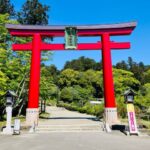
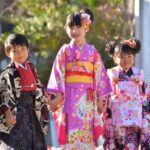
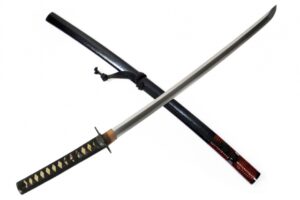
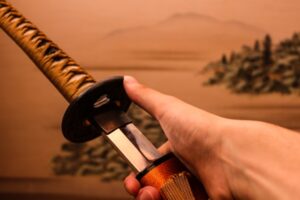
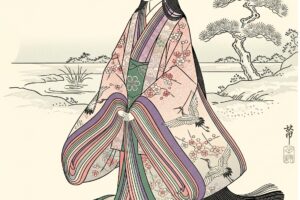

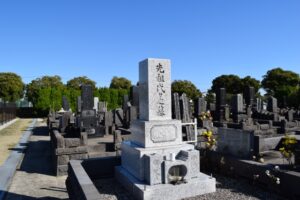
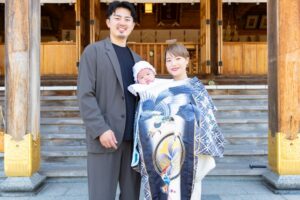


コメントを残す